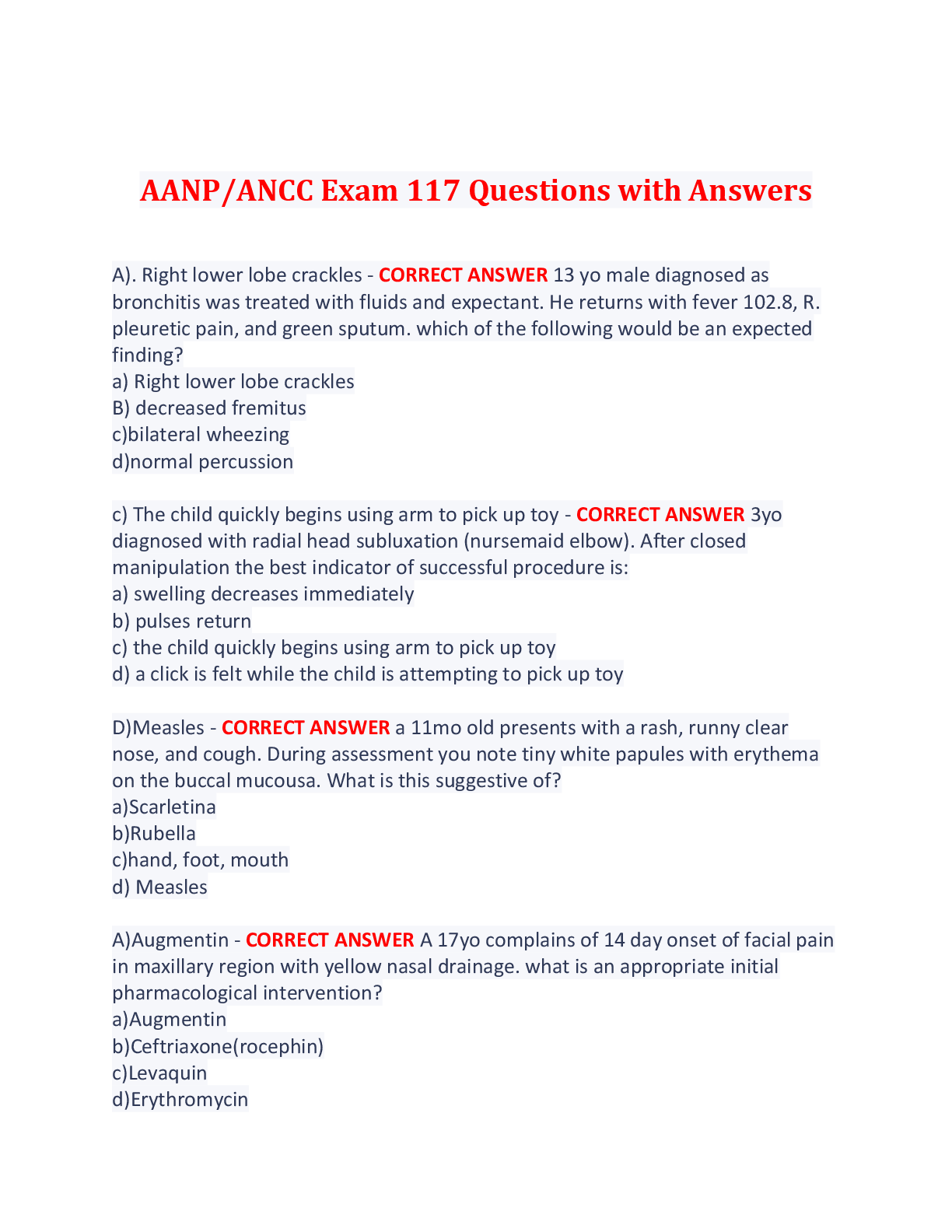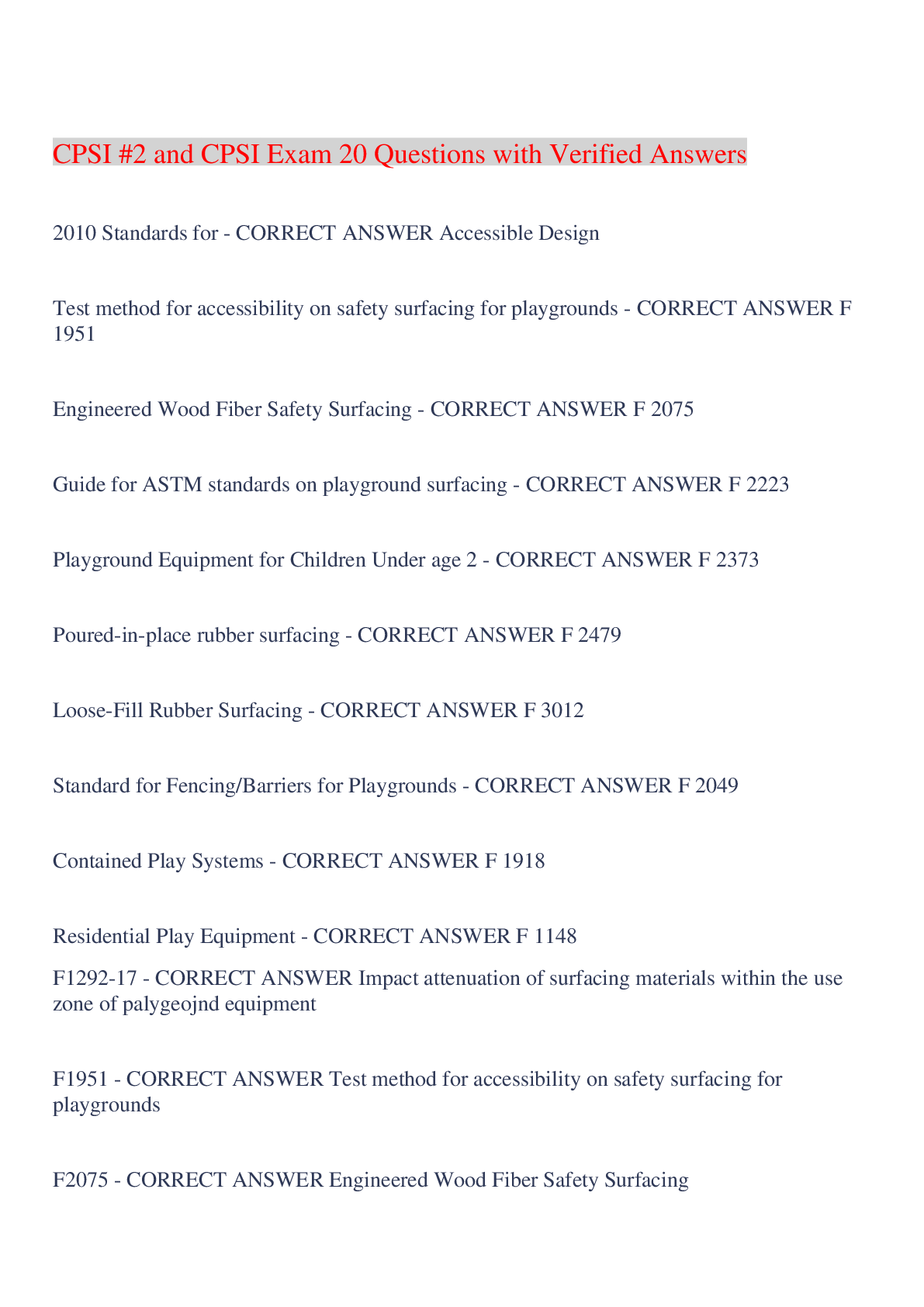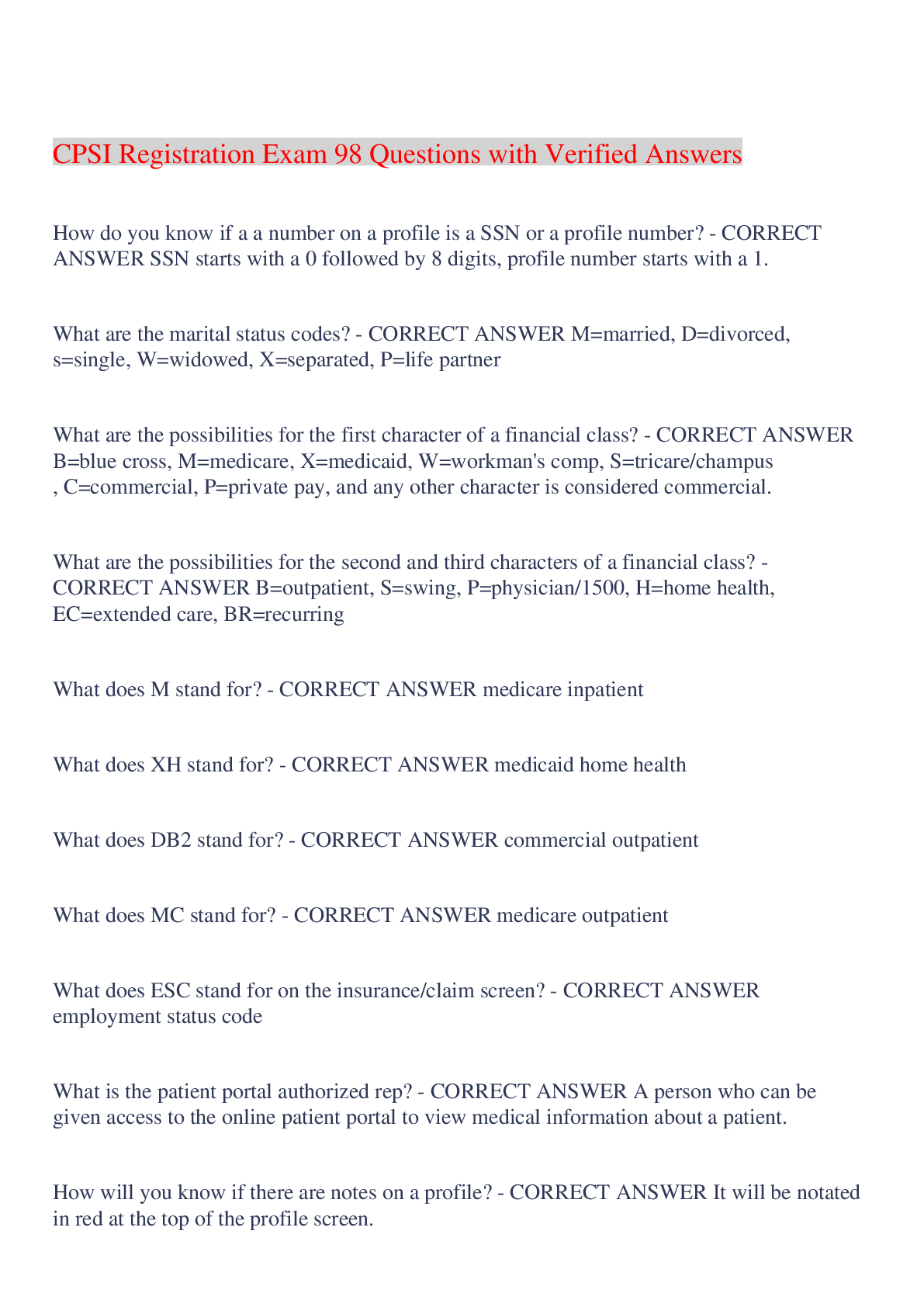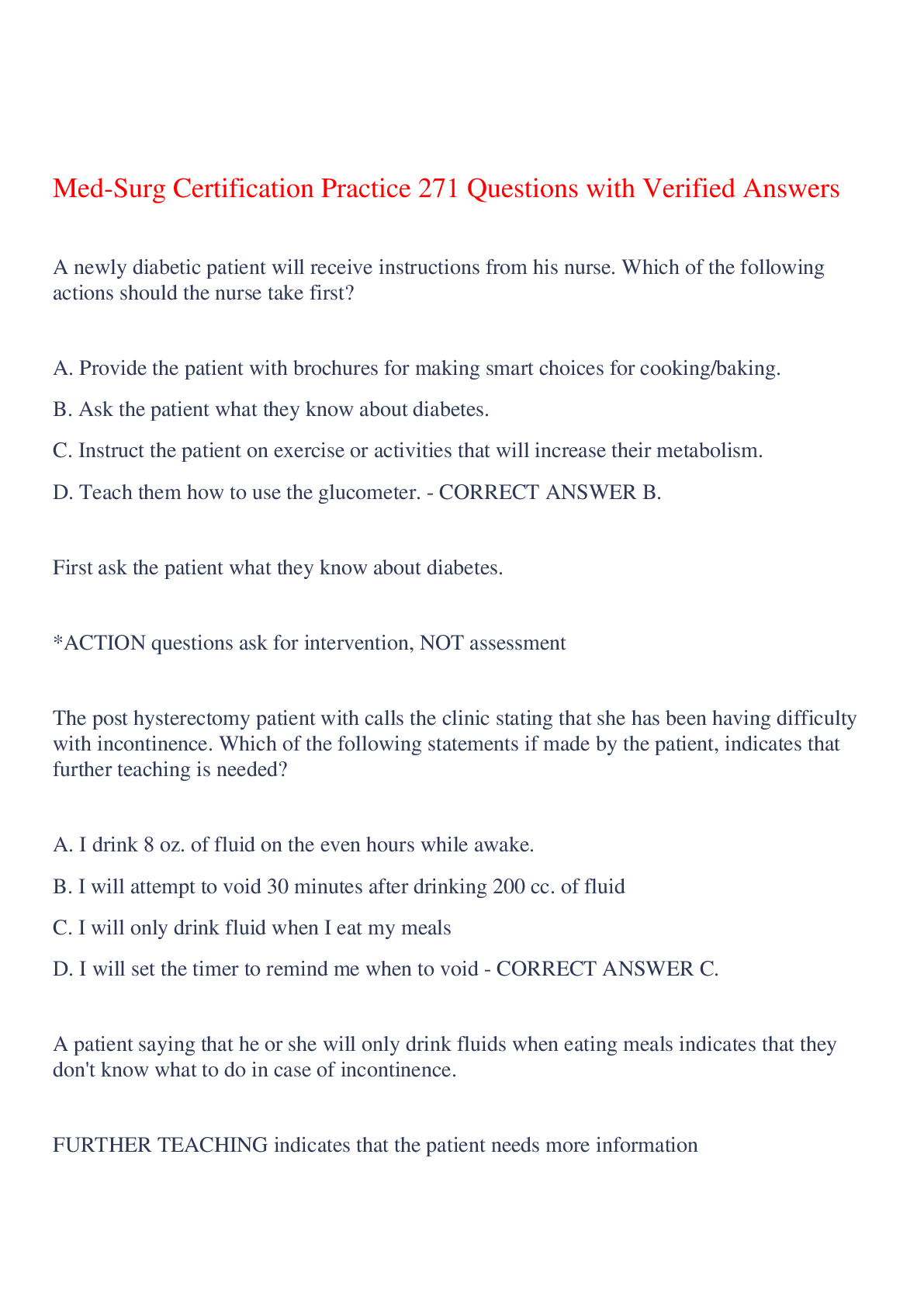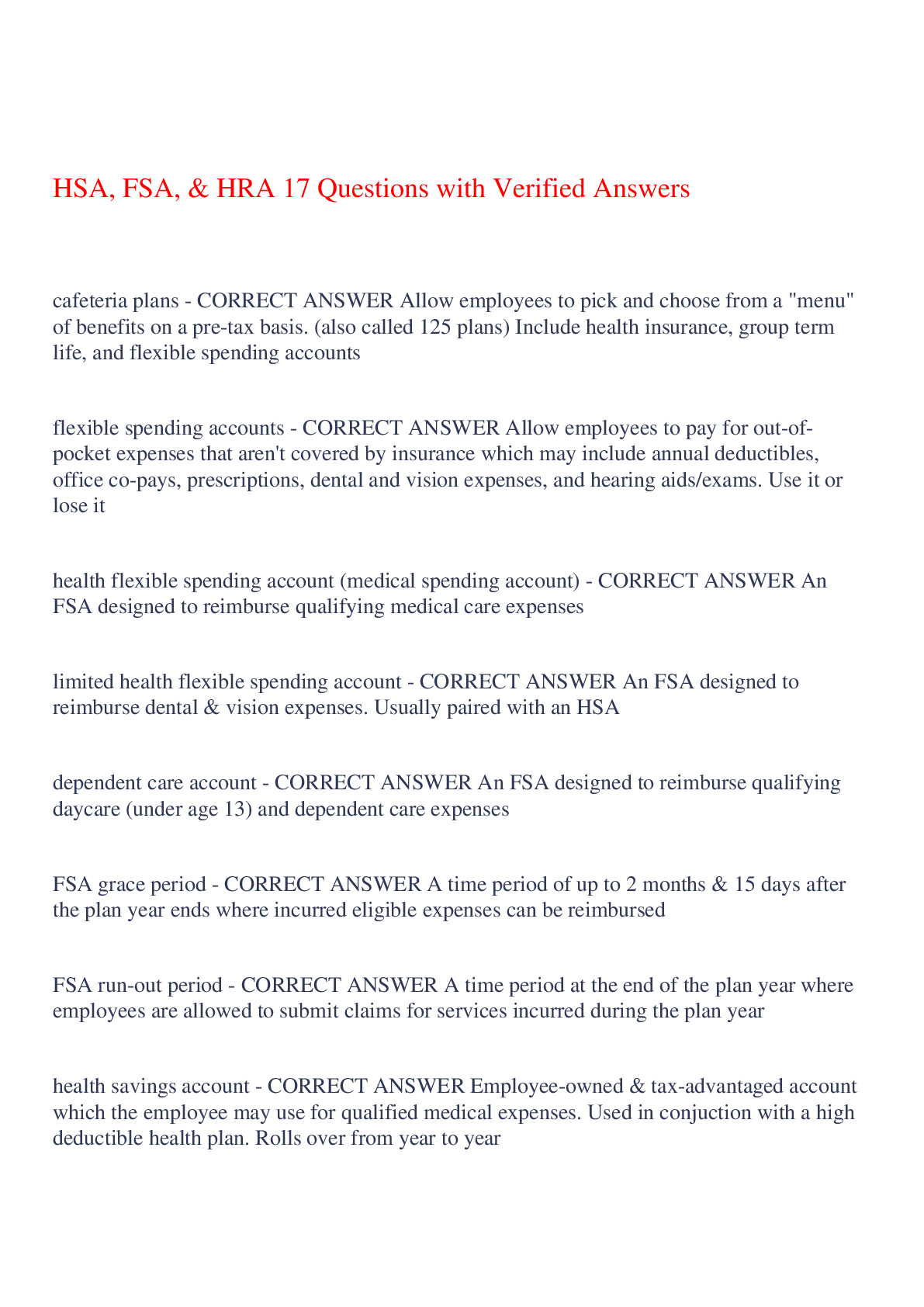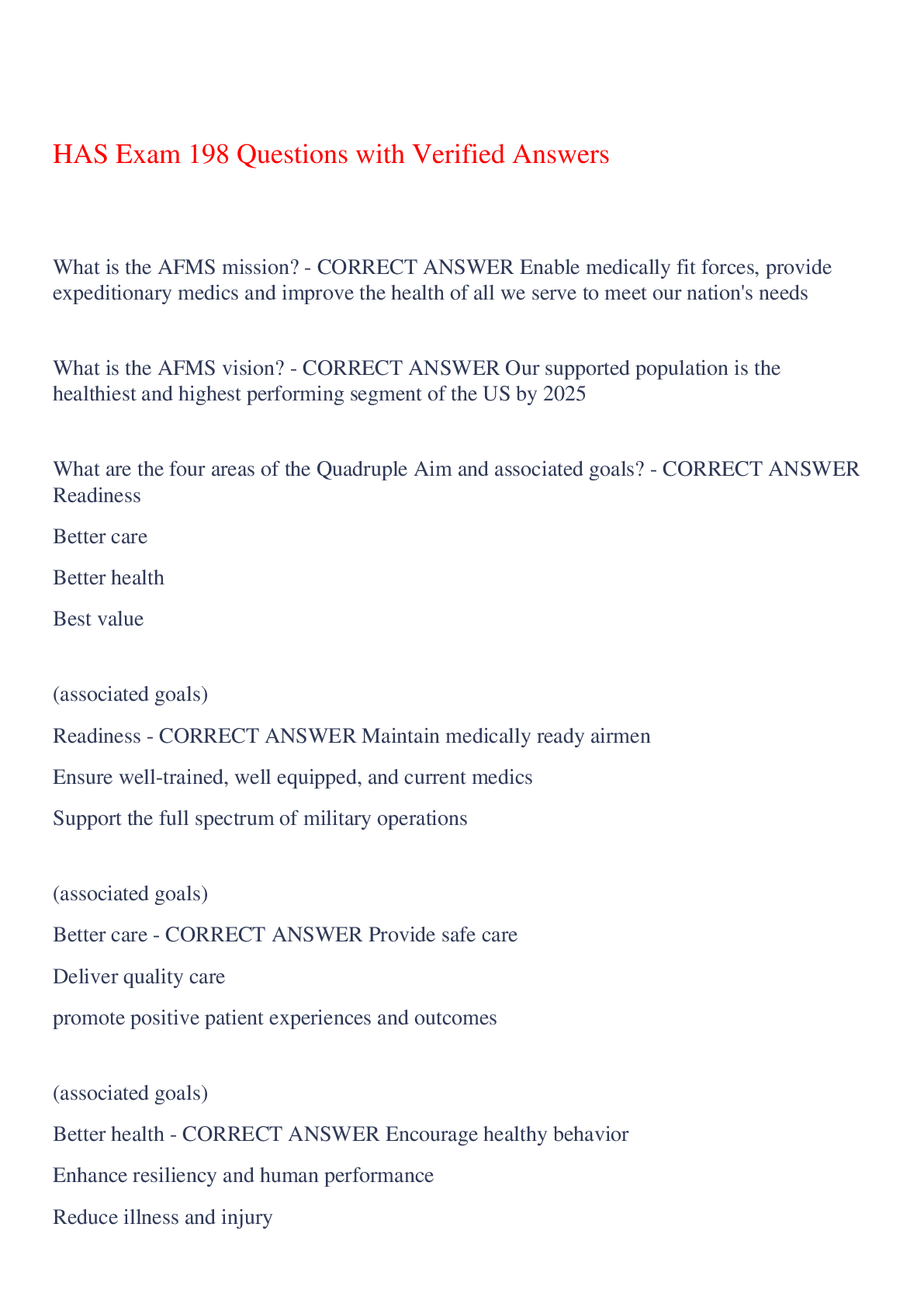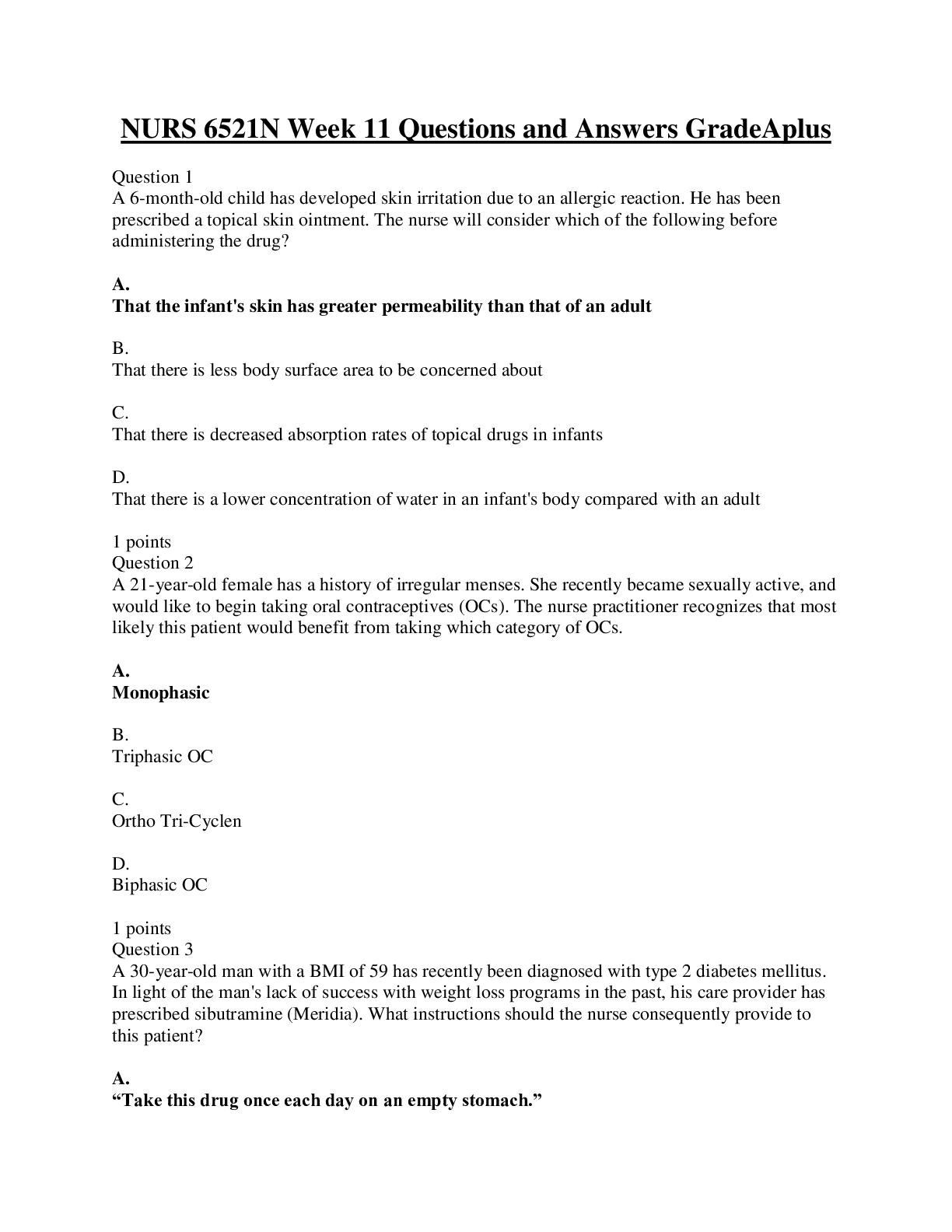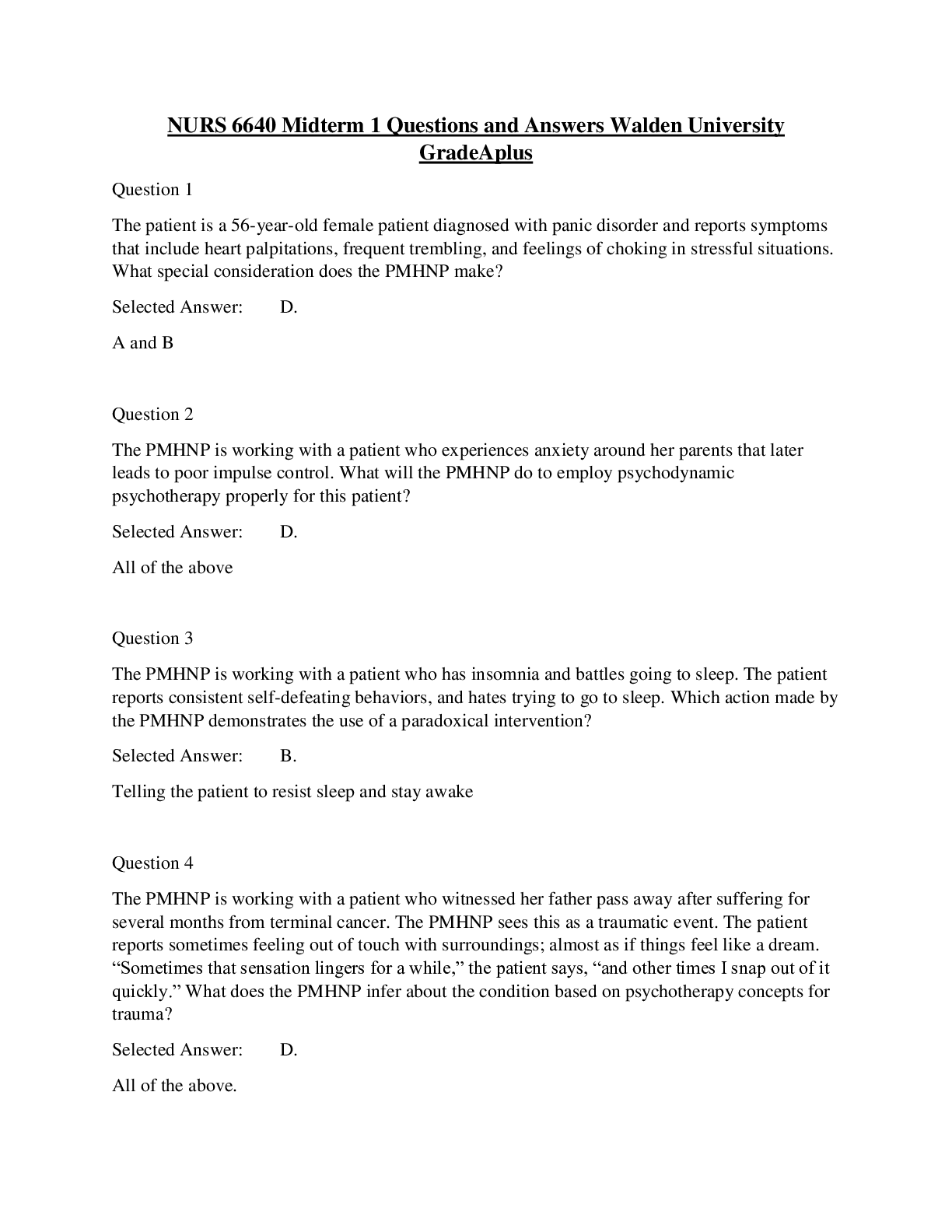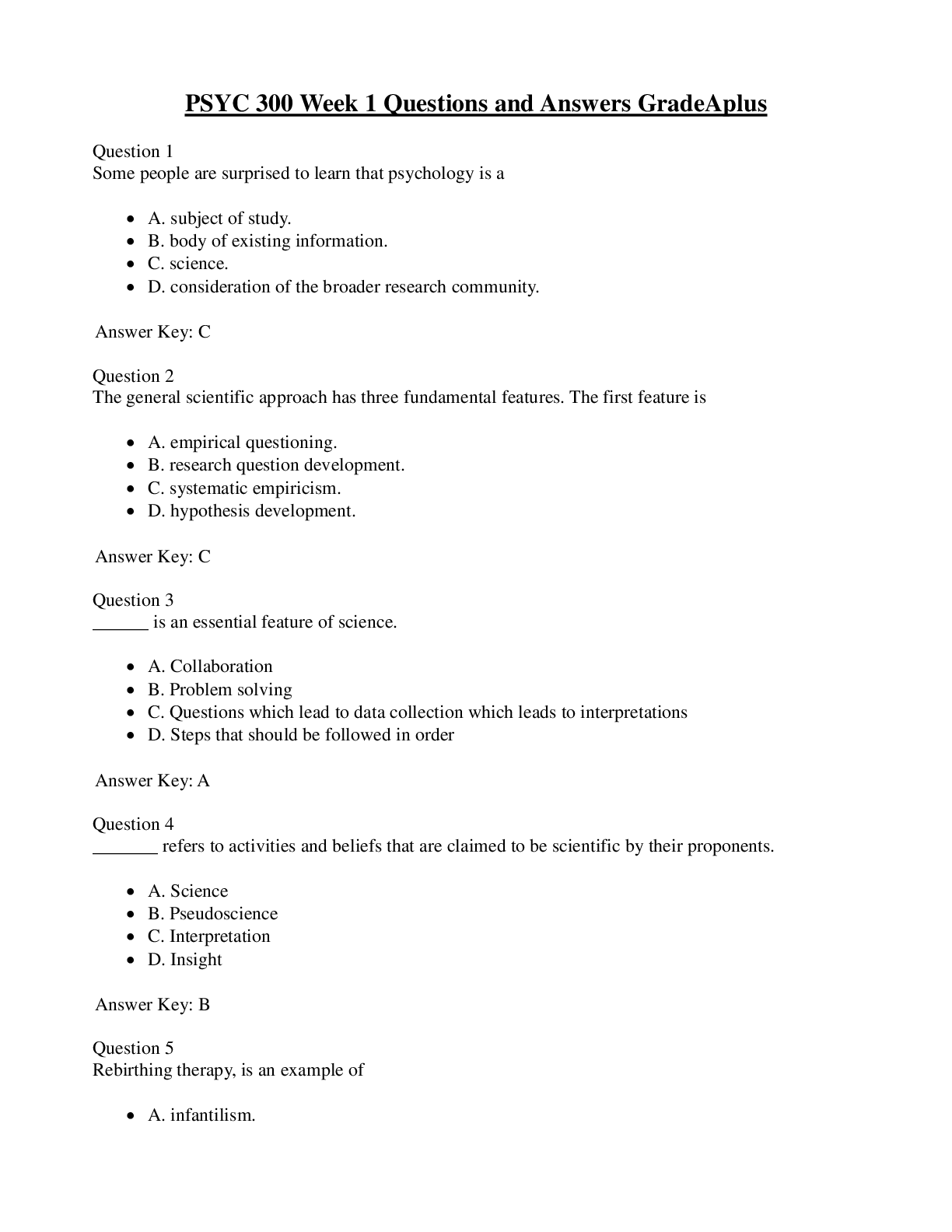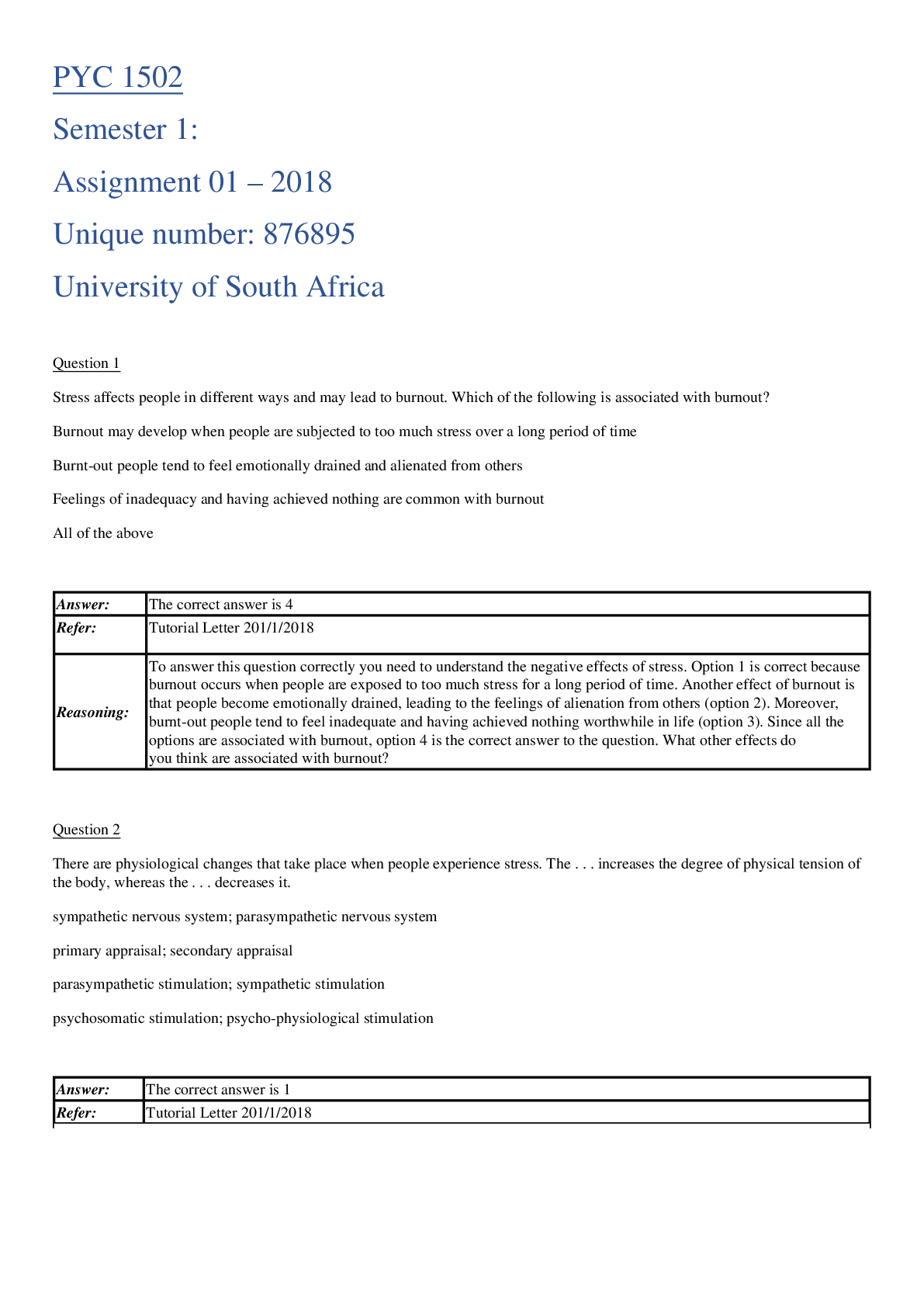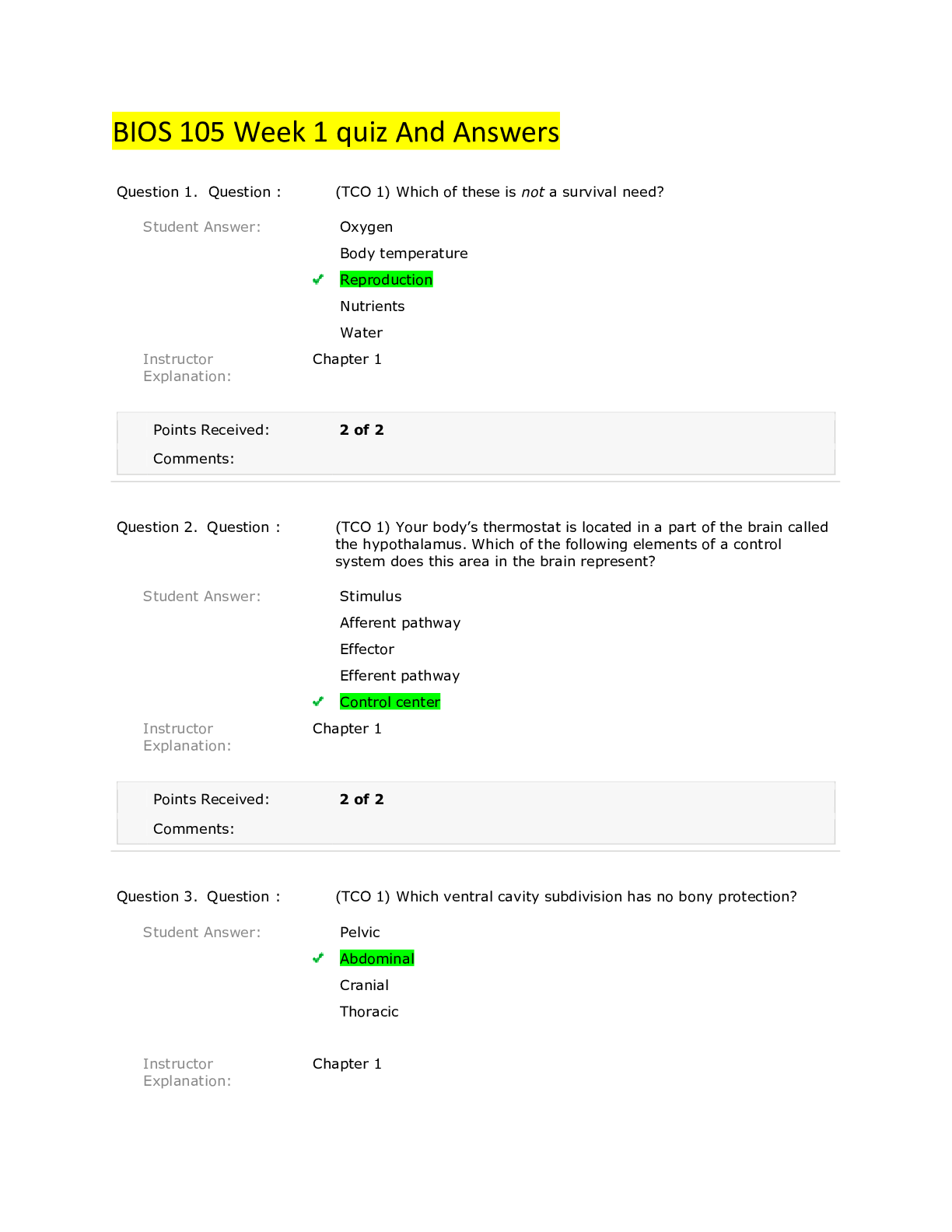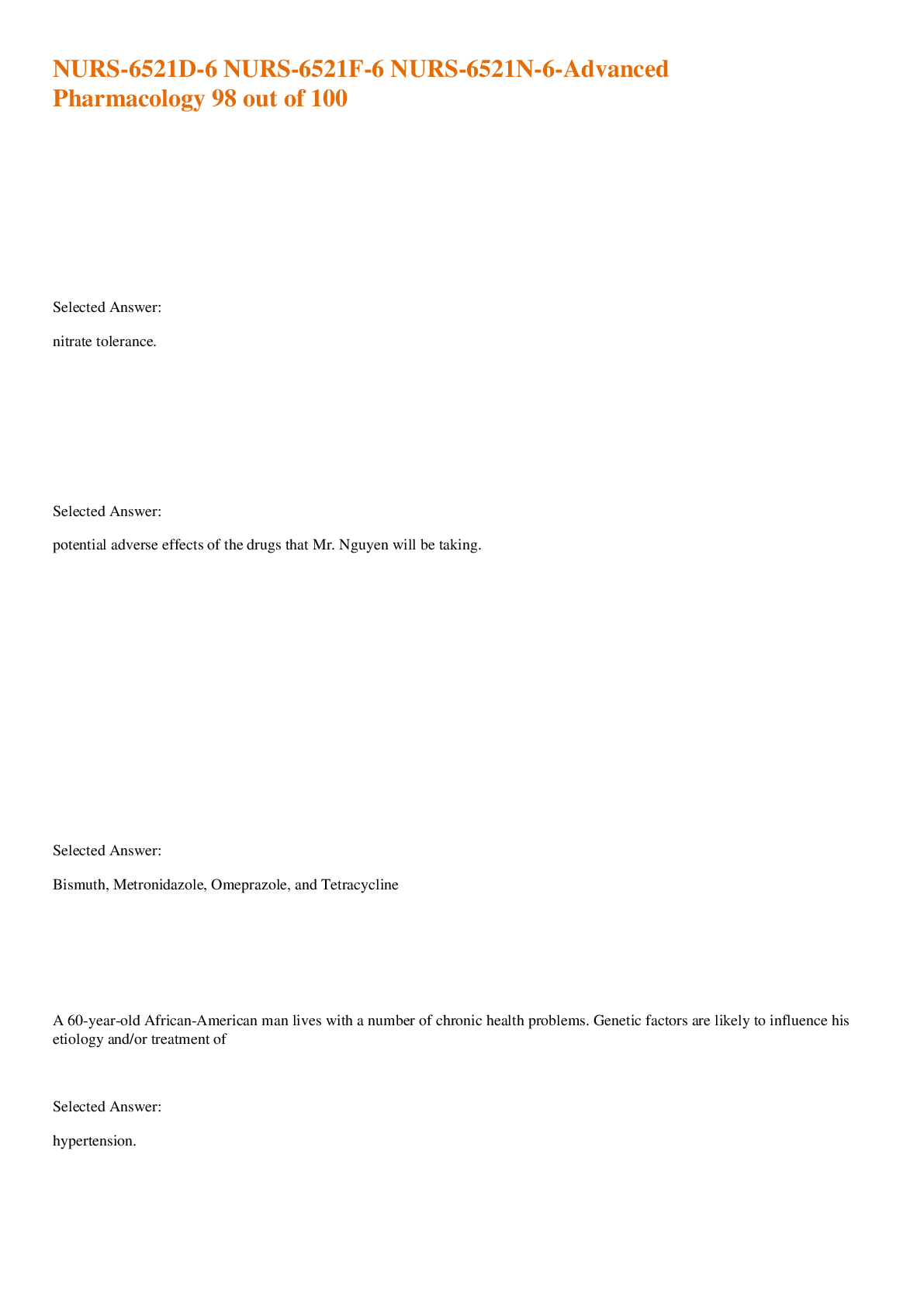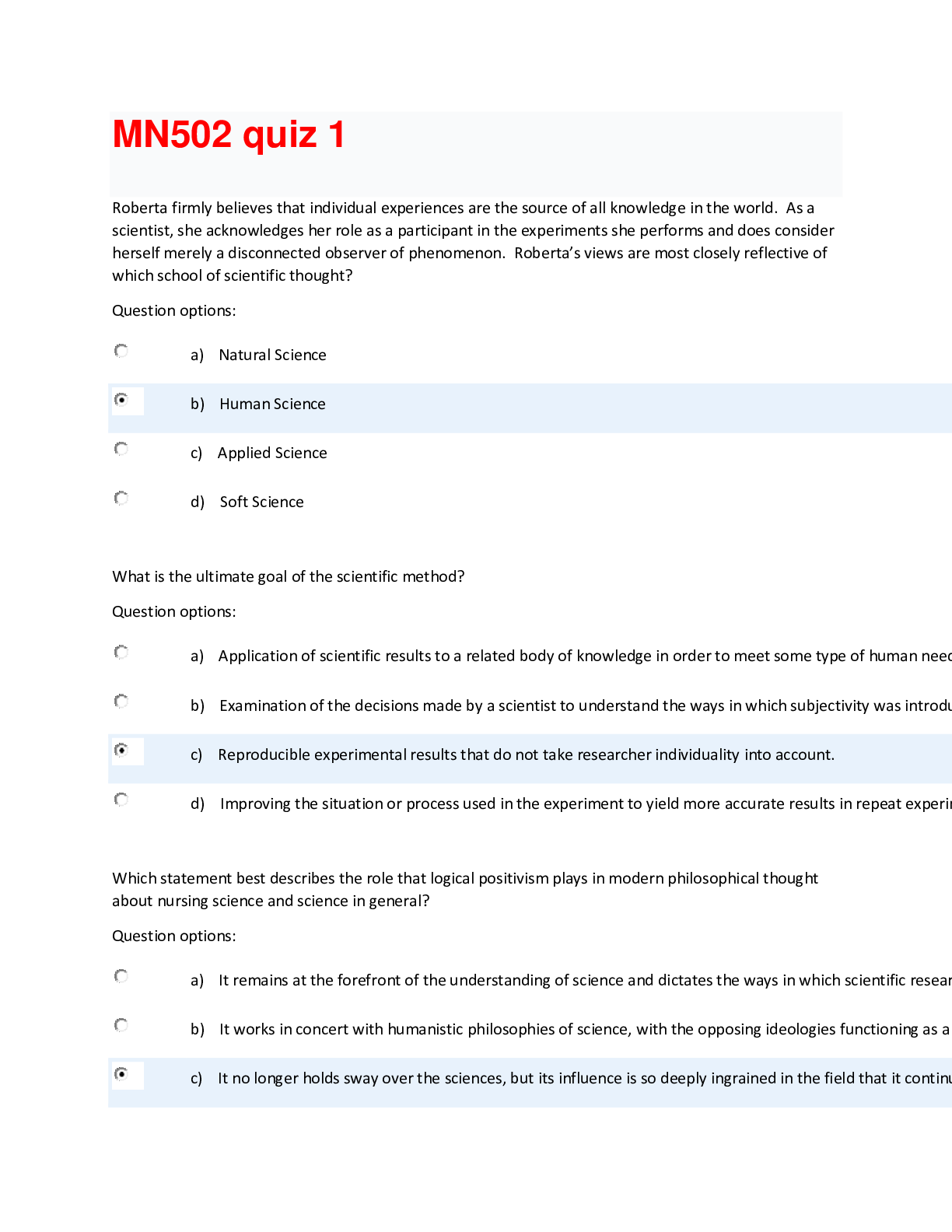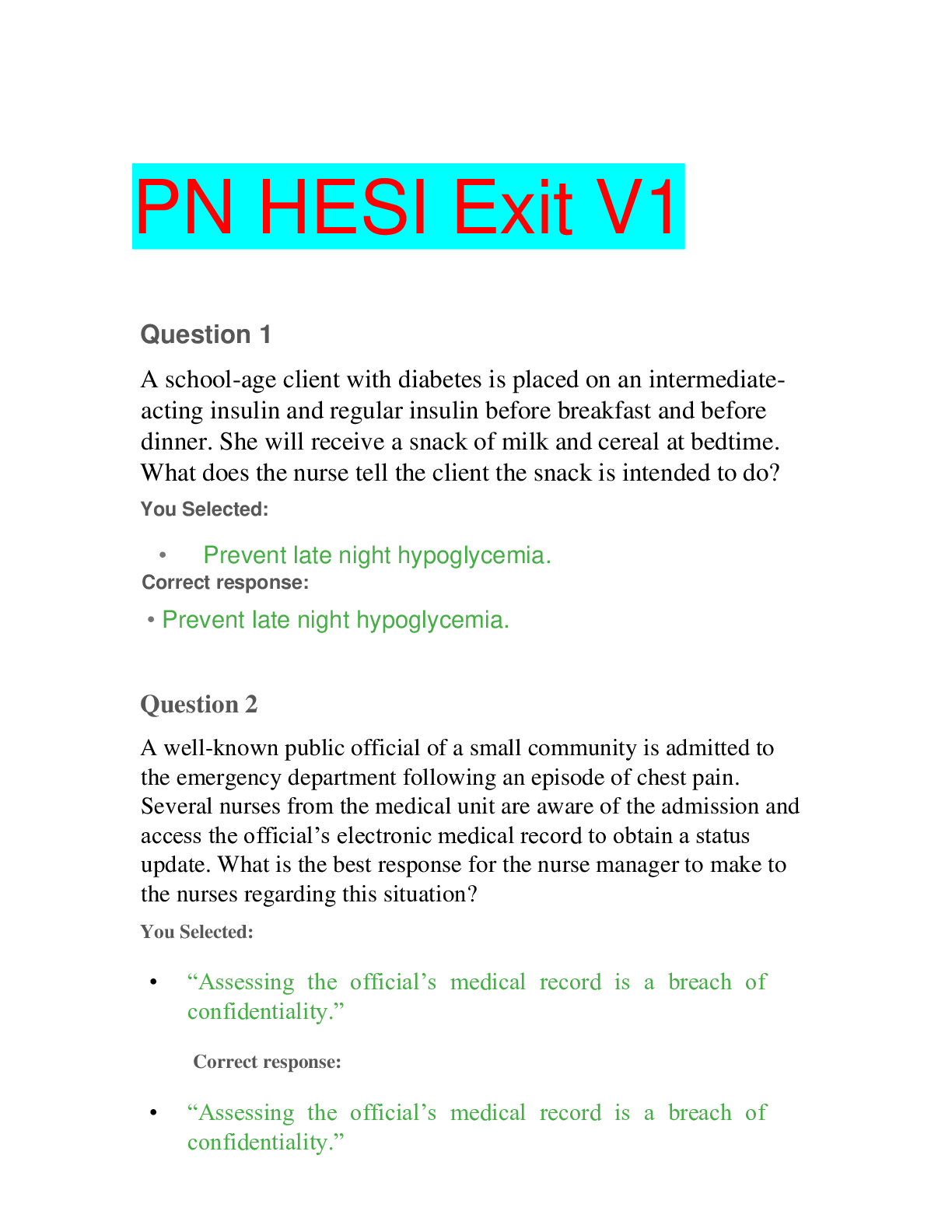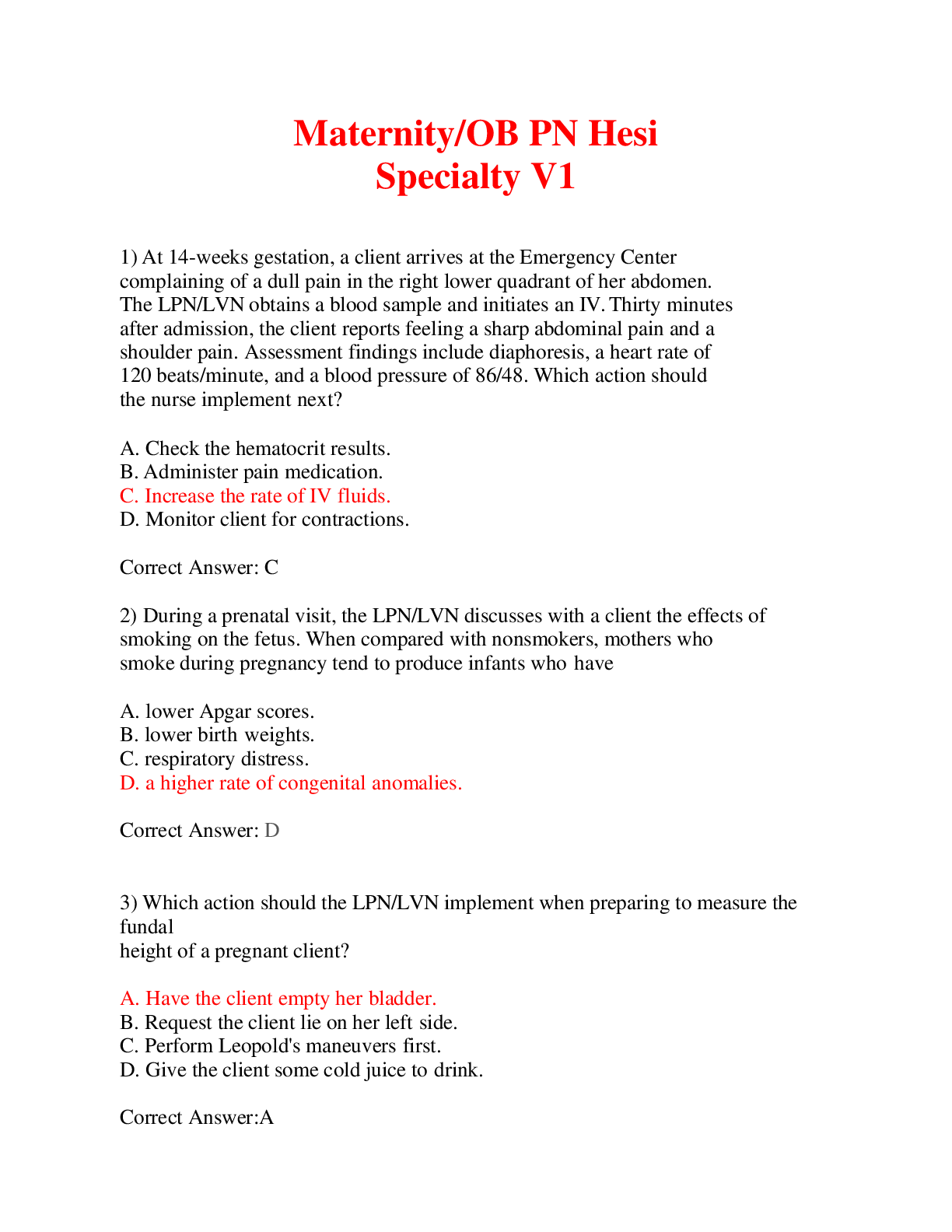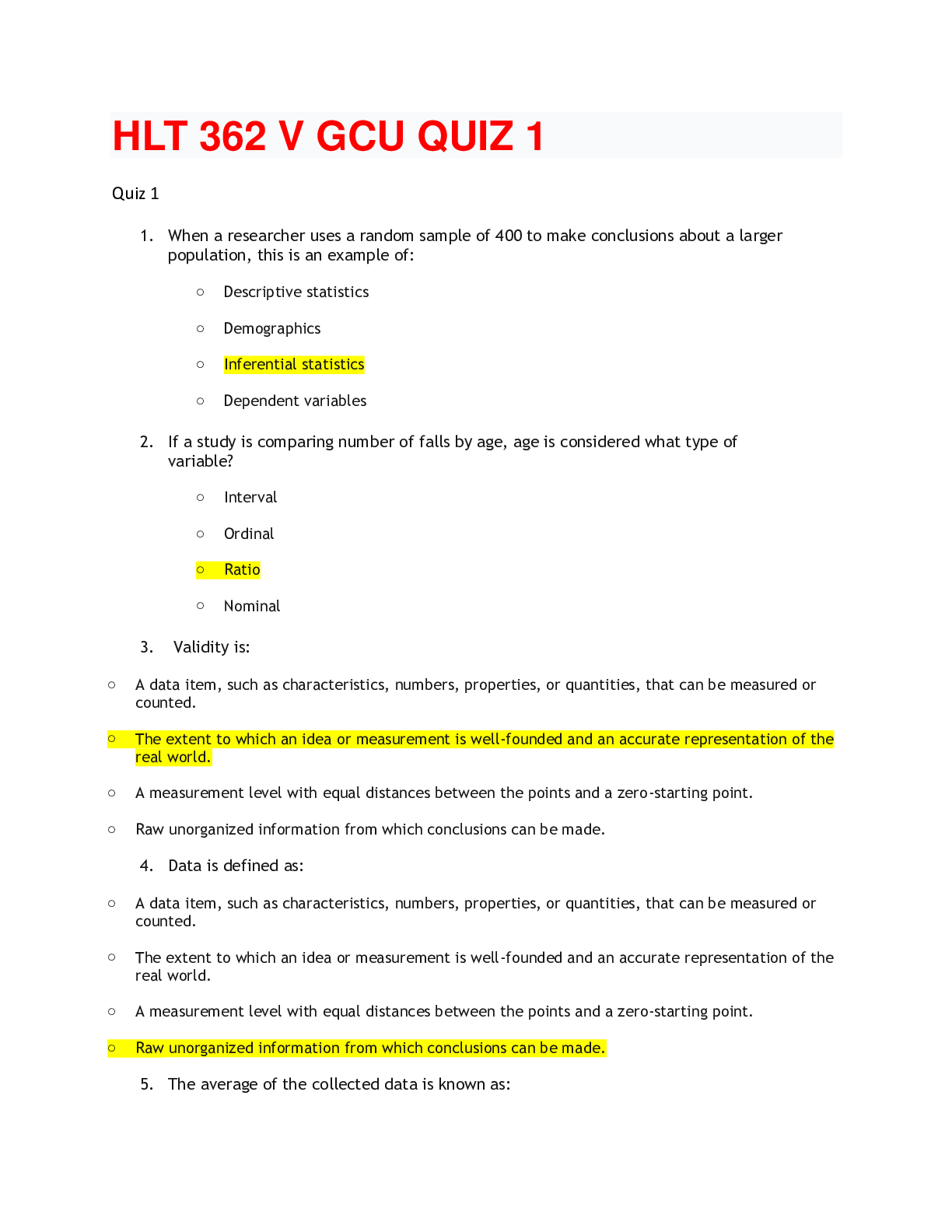BIOD 152 module 1 Exam 1 Questions and Answers,100% CORRECT
Document Content and Description Below
BIOD 152 module 1 Exam 1 Questions and Answers Question 1 2.5 / 2.5 pts This is a bundle of axons found in the peripheral nervous system. Your Answer: The nerves Nerve Question 2 2.5 / 2.5 ... pts This part of the autonomic system increases digestion. Your Answer: Parasympathetic Parasympathetic Question 3 2.5 / 2.5 pts The dorsal root of a nerve contains what type of neurons? Your Answer: The axons of sensory neurons Sensory (Afferent) Question 4 2.5 / 2.5 pts This part of a neuron conducts nerve impulses towards the cell body. Your Answer: Dendrites Dendrites Question 5 2 / 2 pts An interneuron inside the spinal cord is part of the: A. Peripheral nervous system B. Somatic system C. Autonomic system D Correct! D. Central nervous system E. A&C F. B&D Question 6 2 / 2 pts The neuron pictured, below, is best described as: Bipolar Correct! Multipolar Multipolar Unipolar Pseudounipolar Question 7 2 / 2 pts True or false: Neurons come into direct physical contact with one another. True Correct! False False Neurons do not physically touch. They are separated by synapses. Question 8 4 / 4 pts Describe the function and release of neurotransmitters. Your Answer: Neuortransmitter: are chemical found in the axon terminal, they are released by the axon terminal carrying with the transmission from one neuron to another one. Correct answer • Neurotransmitters are chemicals stored inside secretory vesicles (axon terminal vesicles) at the end of the axon terminals. • When neurotransmitters are released by the axon terminal vesicles, they carry the transmission of the nerve impulse from one neuron to another. Question 9 0 / 2 pts An efferent neuron carries information: *** From the central to the peripheral nervous system ****** From the peripheral to the central nervous system Within the central nervous system Within the peripheral nervous system Question 10 2 / 2 pts A postsynaptic neuron would be found: Before the synapse After the synapse Inside the synapse Only in the central nervous system Question 11 3 / 3 pts What is the location and function of Astrocytes? Your Answer: It is found in the Central Nervous system. Lead the axon and help as support of the the synaptic and help to control the blood flow in the brain. • Location: Central nervous system (CNS) • Function: Regulation of chemical environment inside CNS, forming a physical barrier (blood-brain-barrier) by wrapping around blood capillaries • Question 12 3 / 3 pts A patient’s spinal cord was severed in a car accident. Would the patient be expected to regrow axons in their spinal cord? Why or why not? Your Answer: No they wont, because the spinal cord is located in the central nervous system. Just the peripheral system axons are the only able to regrow. • No; Only peripheral system axons are capable of regeneration. The spinal cord is in the central nervous system. Name and describe what is occurring in the neuron cell membrane in section 4 of the diagram. Include the charge of the membrane during this phase. Your Answer: Afterpolarization: here the potassium doors are decreseasing the closure therefore there is an undershoot of the potential. As a result the polarity fall below -70mV then goes back to -70mV once at resting state starts. • Afterpolarization (Hyperpolarization) Potassium gates are slow to close and there is an undershoot of the potential. • The charge drops below -70mV and then returns to -70mV once at resting state again. Question 14 3 / 3 pts At rest, a neuron plasma membrane is: -70 mV. Correct (polarized) +40 mV Hyperpolarized Depolarized Question 15 Which of the following is false concerning the sodium-potassium pump? . It maintains the resting phase of an axon. . For every three sodium ions pumped out, two potassium ions are pumped in. . It must remain in constant operation to maintain the resting state. Correct . The overall effect is a negative charge on the outside of the membrane. (False, the effect of the pump is a negative charge inside the membrane, positive on the outside.) Question 16 True or false: A sensory neuron is signaling the body of extreme pain. This means that the strength of the action potential is greater than usual. Explain your reasoning. Your Answer: False There is no variation in the strength of action potentials. (It is an all-or-nothing response). There is variation in the number and frequency of neurons firing. Question 17 Which of the following statements is true concerning the neuromuscular junction? The NMJ terminates on neurons within the brain and spinal cord. The NMJ terminates on a muscle fiber. The NMJ terminates on a presynaptic motor neuron. The NMJ does not have a synapse. Question 18 2.5 / 2.5 pts How is a message sent from one neuron to another? There is about 1 minute fluid filled space named synapse within the terminal axon and the sending neurons. When the impulsed nervous get to the end of the terminal axon the neurotransmitter are deposited inside the synapse. Those one attached to the receivers of the following neurons. Here the Sodium opens which create Depolarization. There is a minute fluid-filled space, called a synapse, between the axon terminal of the sending neuron and the dendrite of the receiving neuron. When a nerve impulse reaches the end of an axon, neurotransmitters are released into the synapse. These bind with a receptor on the next neuron, opening Na+ gates in the receiving dendrite which causes depolarization and the impulse is carried. Question 19 What neurotransmitter is found at the neuromuscular junctions? Your Answer: ACh Acetylcholine (ACh) Question 20 True or False: Action potentials travel in one direction within the same neuron. (only one direction in the same neuron) False Question 21 True or False: Reflexes occur only with conscious intervention from the brain. True False Question 22 0 / 3 pts Fill in the blank: In a reflex, the neuron conducts nerve impulses along a pathway to create a response. Your Answer: sensory SA Correct ANSWER motor (efferent) Question 23 4 / 4 pts This part of a reflex is inside the CNS, made up of one or more synapses. Your Answer: Integration center Integration center Question 24 3 / 3 pts Which of the following statements is true about reflexes? Reflexes only involve the brainstem or higher levels of processing. Regulation of blood sugar by hormones is one example of a reflex. Reflexes cannot be tested because they are internal. Pulling a hand away from a hot flame is not a reflex; it is entirely voluntary. Question 25 3 / 3 pts What is false about the stretch reflex? The effect of the motor signal is to relax a muscle. The patellar reflex tests the stretch reflex of the quadriceps femoris. The muscle spindle detects stretch within the muscle. Stretch reflexes help to decrease the stretch on a muscle. Question 26 4 / 4 pts What is false about the flexor withdrawal reflex? A. It does not involve interneurons. B. It involves excitatory interneurons. C. It involves inhibitory interneurons. D. The effect of the reflex is to create a co-contraction of two muscles E. A&D F. B&C Question 27 7 / 10 pts Answer the following essay questions: You touch a hot pan when cooking. List out the steps, in detail, of the nervous pathway of the reflex that occurs. Include any sensory organs involved and the action of the reflex. Your Answer: The sensory neuron detects the touch, then it sends signal through the ganglion in then the sensory neuron synapses in the gray matter in the spinal cord in to the motor neuron. Then the motor neuron sends signal to the ventral root and synapses back. CORRECT ANSWER Flexor withdrawal reflex: • Pain receptor in skin • Sensory (afferent) neuron through DRG • Interneurons in spinal cord: • (1) Excitatory to biceps • (2) Inhibitory to triceps • Motor neurons: Contract biceps, inhibit triceps • Action: Elbow flexion pulls hand away from flame. Question 28 0 / 10 pts Answer the following essay questions: Botulism is a disease caused by a neurotoxin that interferes with the release of Acetylcholine. Patients with this disease experience flaccid paralysis, or the inability to contract their muscles. Explain why this would occur. CORRECT Answer: The nervous system interacts with the muscular system at the neuromuscular junction. Acetylcholine must be released from the presynaptic motor neuron into the synapse to bind onto the muscle fiber, eventually causing a muscle contraction. Without the release of acetylcholine, there will be no interaction between the nervous system and the muscular system and therefore no muscle contraction. [Show More]
Last updated: 2 years ago
Preview 1 out of 10 pages

Buy this document to get the full access instantly
Instant Download Access after purchase
Buy NowInstant download
We Accept:

Reviews( 0 )
$14.00
Can't find what you want? Try our AI powered Search
Document information
Connected school, study & course
About the document
Uploaded On
Dec 07, 2021
Number of pages
10
Written in
Additional information
This document has been written for:
Uploaded
Dec 07, 2021
Downloads
0
Views
180


